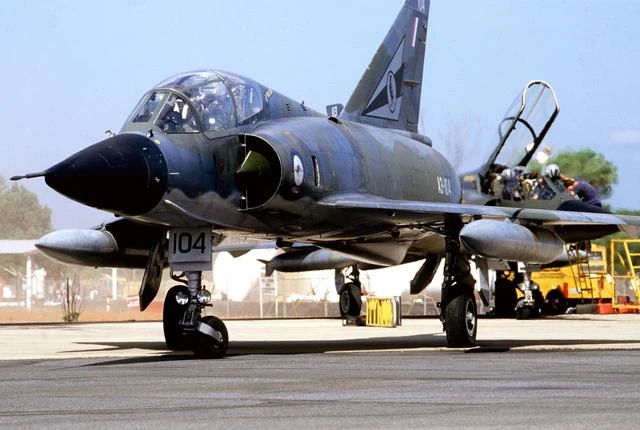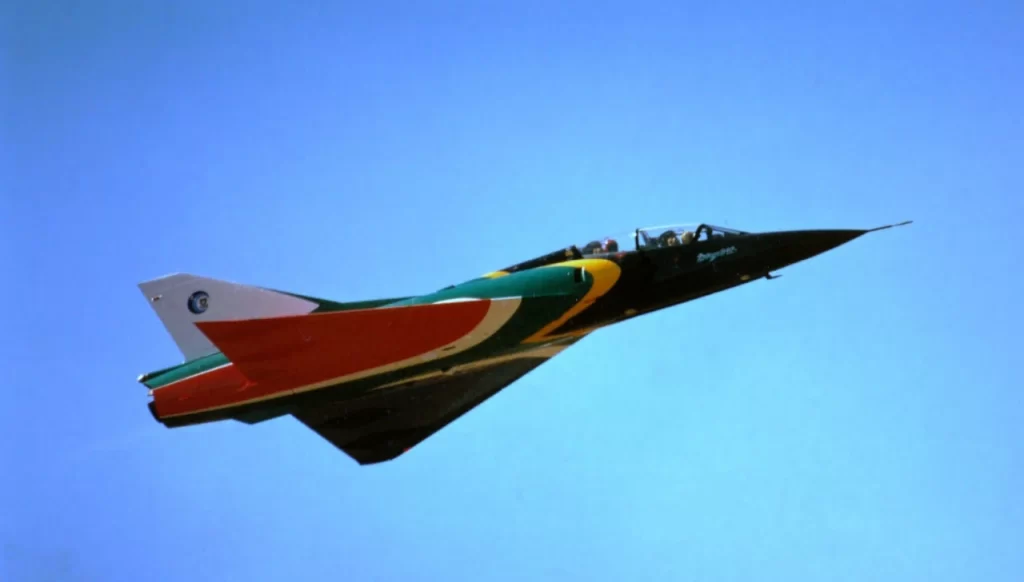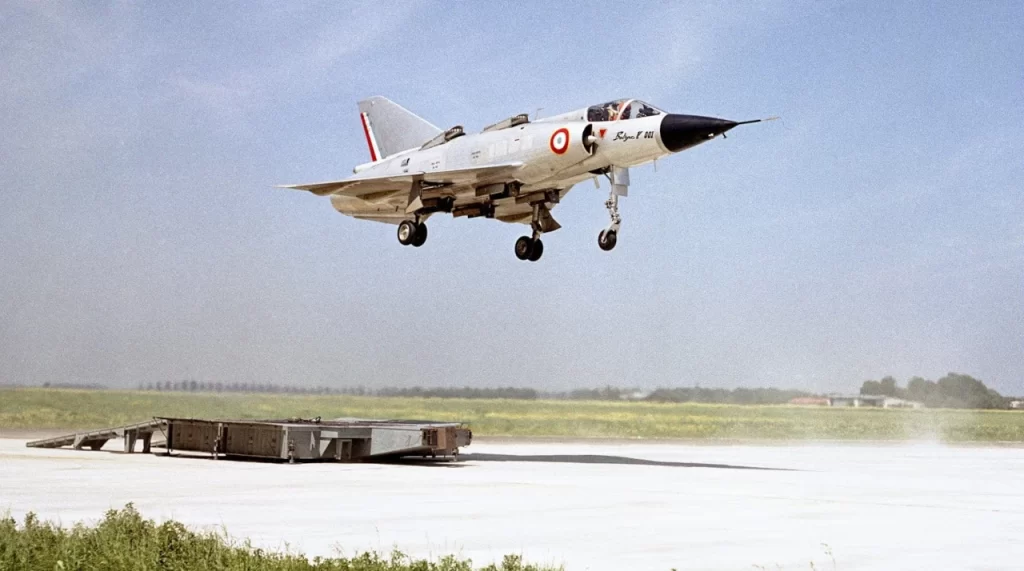Due to its high dependability and excellent cost-effectiveness, the “Mirage” series is popular around the globe. The “Mirage” family includes well-known tailless delta-wing fighters such as the Mirage III, Mirage 5, Mirage 2000, and Mirage 4000. The Mirage F1 is a conventional aerodynamic layout fighter, and the Mirage IV is a presumably “fighter-like” bomber. Compared to the Mirage 2000, the Mirage 4000 has a metal semi-hardshell structure, delta-wing, duck-wing aerodynamic design, and a bubble-style cockpit with a much larger field of view. An electric gearbox controls the manoeuvring flaps and brake flaps in the manner of doors on both sides of the fuselage. Side air intakes are positioned above the wing’s leading edge, and boron and carbon fibre composites are used extensively in the fuselage, elevators, elevons, wings, vertical tail fins and other components. It was the first aircraft in the world to use composite materials.
The aircraft has two M53 turbofan engines, each generating 64 kilotons of thrust and 95.1 kilotons with afterburners activated. When empty, the thrust-to-weight ratio exceeds 1, enabling the Mirage 4000 to reach a maximum speed of Mach 2.2.
The Mirage III is a single-seat, single-engine, delta-wing, supersonic jet fighter with a tailless delta wing. It weighs 30 per cent more than Mirage I. The Mirage III lacks a horizontal tail and features a triangular wing with a 60-degree sweep angle. The nose cone contains a search and intercept radar antenna, and the fuselage is based on the concept of “area rule.” The intake is located on the side of the fuselage in a cone-shaped semicircle. It can be outfitted with two 30-millimeter “DEFA” cannons and transport several bombs or missiles for air-to-air combat or ground assault.

In November 1956, the first Mirage III made its maiden flight. It attained a top-level speed of 1.52 Mach during its seventh test flight. The aircraft’s intake featured a semi-conical centre body that could be moved forward during high-speed flight to prevent ventilation disruption. During September 1957 test flights, the aircraft was equipped with the more capable Atar 101G.2 engine, attaining a maximum level flight speed exceeding 1.9 Mach.
The French Air Force was so impressed by the Mirage III’s performance during demonstration flights that they immediately ordered 10 Mirage IIIA pre-production aircraft. The Mirage IIIA was two metres longer than the Mirage III prototype, which increased the wing area by 17.3 per cent and decreased the aspect ratio to 4.5 per cent. It was propelled by an Atar 09B engine with a dry thrust of 43.2 kilonewtons and an afterburning thrust of 58.9 kilonewtons, while the SEPR rocket booster was retained. The first pre-production Mirage IIIA made its first flight on May 12, 1958, and in October 1958, during test flights, it reached a maximum speed of 2 Mach for the first time. Dassault was confident that the aircraft could achieve even greater velocities, and after extensive preparation, it did not disappoint. During test flights in June of the following year, it attained a maximum flight speed of 2.2 Mach, becoming the first combat aircraft in Europe to exceed 2 Mach. Dassault manufactured the remaining six aircraft as production models, outfitting them with Thomson-CSF’s Cyrano air-to-air radar and delivering them to French Air Force fighter units.
After learning that Dassault had developed a high-performance fighter, Australia was interested in acquiring the aircraft. To evaluate the aircraft’s performance, the Australian government requested that Dassault modify one Mirage III with a British Rolls-Royce Avon 67 engine with a thrust of 71.1 kilonewtons (since Australia was a member of the Commonwealth, using British engines facilitated logistics and maintenance). The modified aircraft was designated Mirage IIIO and conducted test flights in early 1961; however, the Avon engine was ultimately not adopted. The Mirage IIIO designation was retained, and Australia continued to use it after the Mirage IIIE was introduced.

The official production model of the Mirage III was the Mirage IIIC, which entered production in October 1960. The aircraft’s fuselage was lengthened by approximately 0.5 metres compared to the A variant. It featured an Atar 09B.3 engine with a military thrust of 4,250 kilograms and an afterburning thrust of 6,000 kilograms. The engine had an overspeed system that engaged automatically when the aircraft exceeded 1.3 Mach.
The aircraft could carry 625-liter, 1,100-liter, 1,300-liter, and 1,700-liter auxiliary fuel containers. Its fixed armament consisted of two 30-millimeter DEFA revolver cannons, each with a capacity of 125 rounds. The cannons were located beneath the intake duct, and the DEFA cannons became standard equipment for the Mirage III, with subsequent productions retaining them as well.

Early production Mirage IIIC models featured three hardpoints, one on the fuselage’s centerline and one under each wing. Later, C variants added hardpoint to each outer wing, typically used to mount Matra R530 air-to-air missiles.
The main electronic part of the plane was the Cyrano fire control radar in the nose, which guided Matra R511 or Matra R530 air-to-air missiles carried under the belly.
